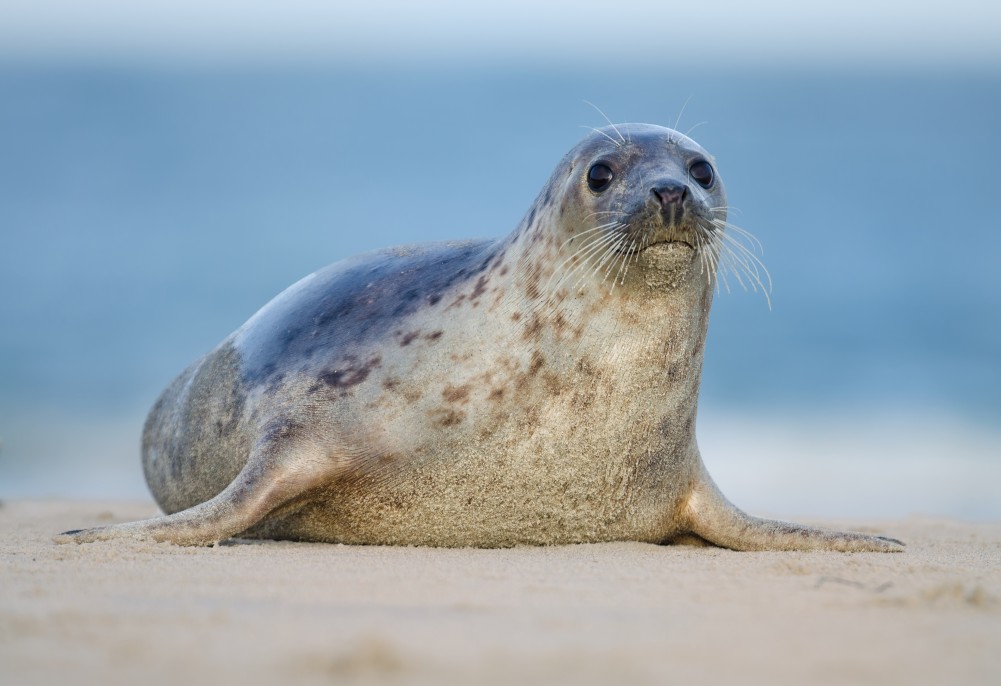Common (or Harbour) seal

Status
Native and locally common
Population
36,050
Scientific name
Phoca vitulina
Common seals are less abundant in the UK than grey seals. The common seal has a dog-like face with large brown eyes, white whiskers and a snub nose but it can be difficult to tell the two species apart, especially in the water. Their fur varies in colour but is usually speckled grey-brown and may appear silvery when dry. Pups are born with a dark, adult pelage, their white fur having been moulted while still in the womb.
Although they live in groups (of up to 1,000 individuals), common seals are careful to maintain a respectful distance from each other, avoiding confrontation. Most of the water that they need is obtained from prey and they are unable to drink seawater.
Head-body length: 120 – 160cm
Weight: 45 – 130kg
Lifespan: The maximum age of males is about 20 years, and that of females about 30 years
Reproduction
Mating takes place in July, probably almost always in the water. Single pups are born in June and early July the following year and are weaned after about four weeks, when females will mate again. Pups are born on rocky skerries or mud- or sandbanks exposed at low tide and are able to swim and dive hours after birth. Attentive mothers have been known to dive with a pup in their mouth or flippers if threatened.
Diet
Fish, including cod, herring and mackerel, as well as squid, shellfish and crustaceans.
Habitat
The common seal prefers sheltered rocky shores and sandy estuaries.
Predators
UK seals have no natural predators but potential shark predators and attacks by killer whales have been recorded in British waters.
Threats
Pollution, disease (Phocine Distemper Virus) and entanglement in discarded fishing gear. The reasons for the current decline around Britain are unknown.
Status & conservation
Native and locally common, but recent declines (of up to 50% since 2000) have been recorded in populations in Orkney, Shetland, the Moray Firth and Firth of Tay. Classified as Least Concern on the IUCN Red List. The common seal is protected under UK law and the EC Habitats Directive. Sixteen Special Areas of Conservation (SACs) have been designated specifically for seals.
UK population size & distribution
UK population of 36,050. Abundant in northern waters but rare elsewhere. They are found around Orkney, Shetland, and the Outer Hebrides; a few colonies exist along the east coast in sandy estuaries, from Scotland to the Wash, and on the north and south coasts of Ireland.
Did you know?
During dives of up to 10 minutes, seals slow their heart rate down from 120 beats per minute to 40 bpm as the blood flow to their muscles is reduced in order to conserve oxygen. On deep dives, lasting up to 30 minutes, their heart rate may be as low as 3 – 4 bpm.
